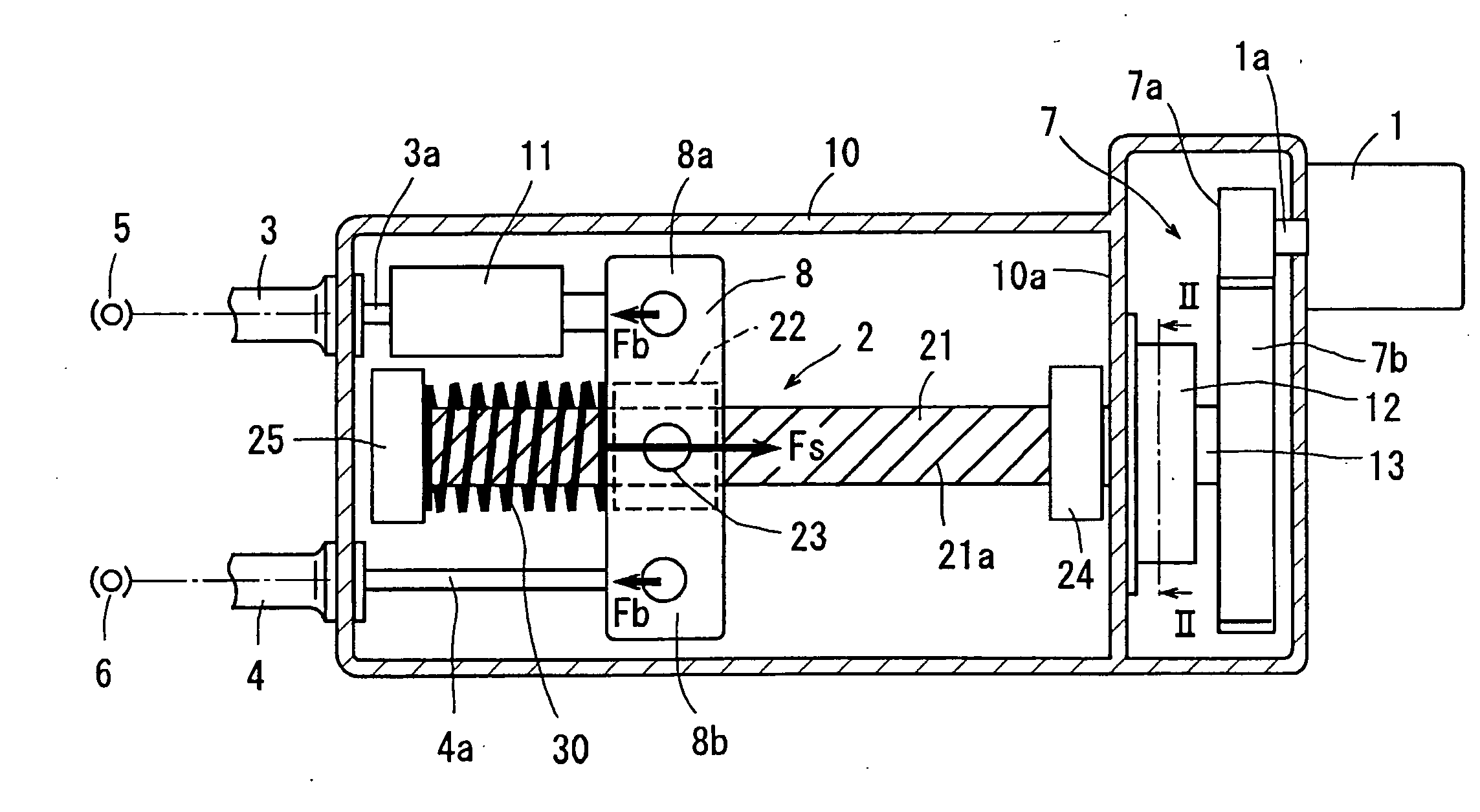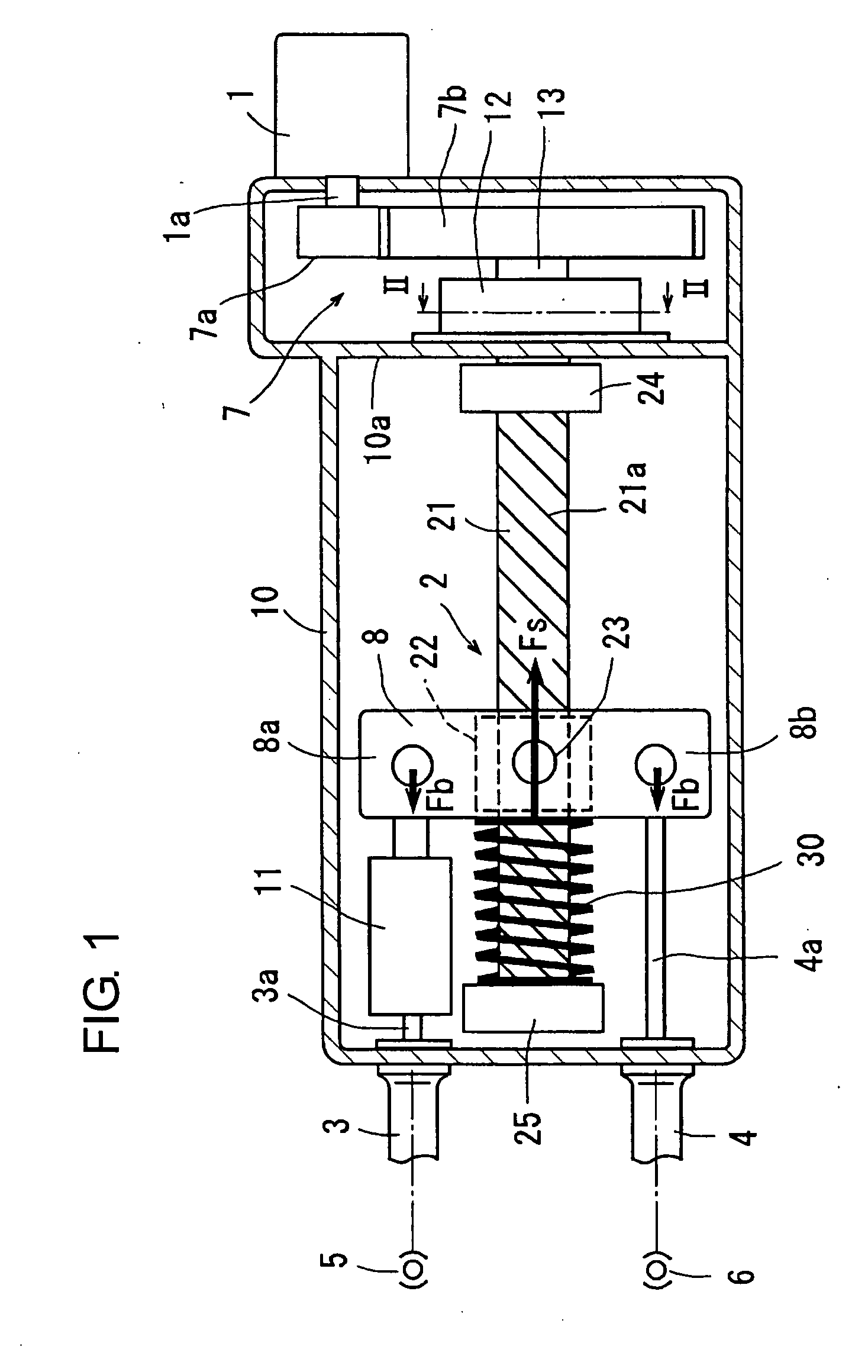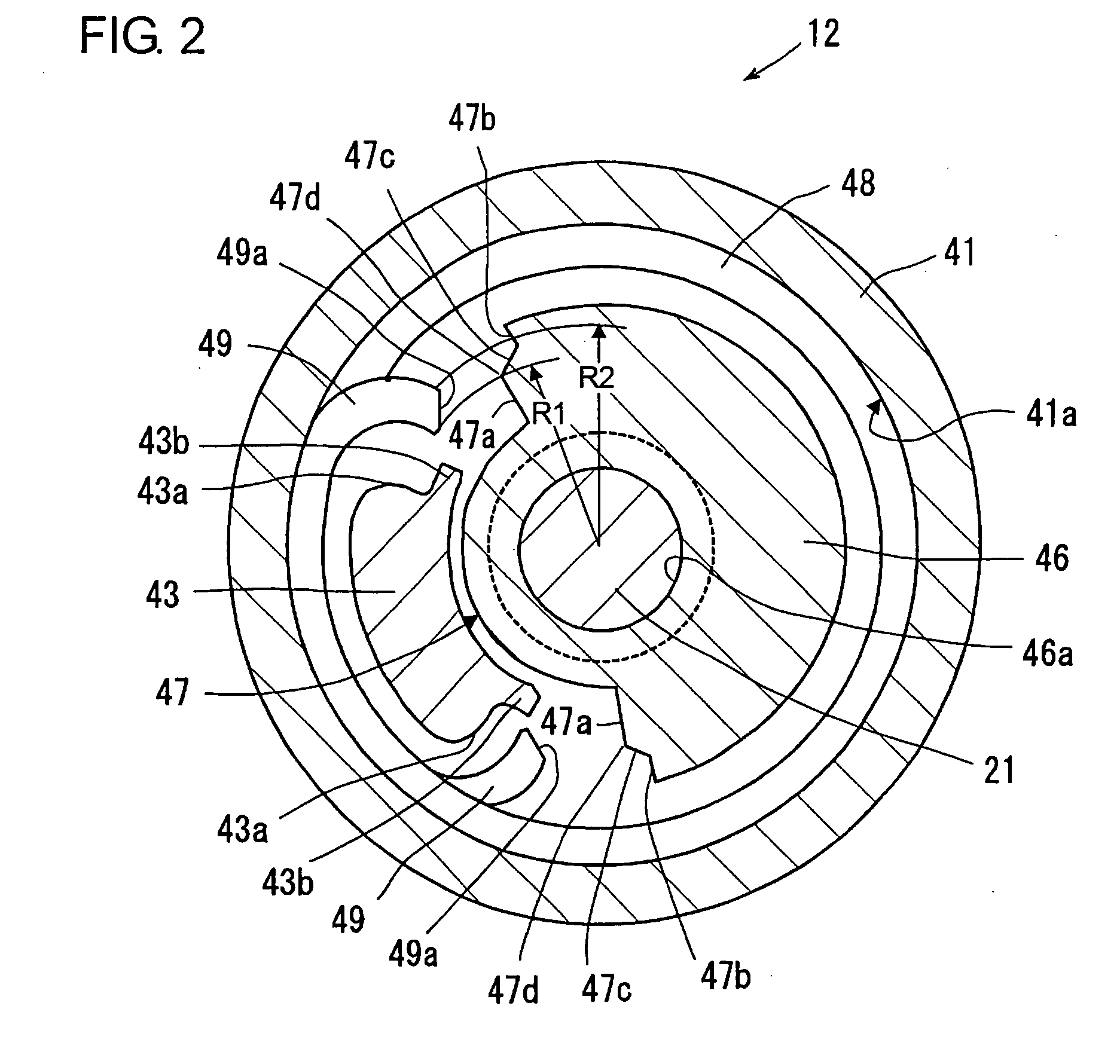Electric parking brake device
a technology of parking brake and electric motor, which is applied in the direction of braking system, mechanical equipment, transportation and packaging, etc., can solve the problems of certain limit on downsizing devices, and achieve the effect of enhancing responsiveness
- Summary
- Abstract
- Description
- Claims
- Application Information
AI Technical Summary
Benefits of technology
Problems solved by technology
Method used
Image
Examples
first embodiment
[0019]Hereafter, an electric parking device in a first embodiment according to the present invention will be described with reference to FIGS. 1 to 5. The electric parking brake device in the present embodiment comprises a housing 10, an electric motor 1 mounted on the housing 10, a conversion mechanism 2 for converting the rotational drive force of the electric motor 1 into a linear drive force, and a pair of cables, each composed of outer and inner cables 3, 3a or 4, 4a, for transmitting the linear drive motion from the conversion mechanism 2 to a pair of parking brakes 5, 6 schematically illustrated herein. One-way clutch 12 as a clutch mechanism is provided between the electric motor 1 and the conversion mechanism 2, and an equalizer 8 as a movable member and a compression spring 30 made of an elastic member as auxiliary force applying means are provided between the conversion mechanism 2 and the cables. Further, a tension sensor 11 is provided between the equalizer 8 and one of...
second embodiment
[0041]The principal mechanical components of an automotive electric parking brake device in a second embodiment are the same as those in FIG. 1, as shown in FIG. 6. The same components as those in the first embodiment shown in FIG. 1 are designated by the same reference numerals as used in FIG. 1, and description thereof will be omitted for the sake of brevity.
[0042]In the automotive electric parking brake device in the second embodiment, a tension spring 31 is wound around the screw shaft 21 between the equalizer 8 and the bearing 24, and the tension spring 31 is secured to the bearing 24 at its one end and is hooked on the pivot pin 23. Thus, the equalizer 8 is urged by the auxiliary force Fs of the tension spring 31 in the drawing direction of the inner cables 3a, 4a (i.e., in the rightward direction as viewed in FIG. 6). In this parking brake device, the tension spring 31 is employed, so that the elastic force of the tension spring 31 can be used as the auxiliary force Fs. That ...
third embodiment
[0044]The principal mechanical components of an automotive electric parking brake device in a third embodiment are the same as those in FIG. 1, as shown in FIG. 7. The same components as those in the first embodiment shown in FIG. 1 are designated by the same reference numerals as used in FIG. 1, and description thereof will be omitted for the sake of brevity.
[0045]In the automotive electric parking brake device in the third embodiment, a torque spring 32 is interposed between an extreme end of the screw shaft 21 and the housing 10, wherein one end of the torque spring 32 is hooked on the extreme end of the screw shaft 21, while the other end of the torque spring 32 is fixed on the housing 10. The auxiliary force Fs of the torsion spring 32 applies a force to the screw shaft 12 in such a direction as to rotate the screw shaft 12 in the positive-going direction. This force is transmitted through the screw 21a and the nut 22, whereby the equalizer 8 is urged in the drawing direction o...
PUM
 Login to View More
Login to View More Abstract
Description
Claims
Application Information
 Login to View More
Login to View More - R&D
- Intellectual Property
- Life Sciences
- Materials
- Tech Scout
- Unparalleled Data Quality
- Higher Quality Content
- 60% Fewer Hallucinations
Browse by: Latest US Patents, China's latest patents, Technical Efficacy Thesaurus, Application Domain, Technology Topic, Popular Technical Reports.
© 2025 PatSnap. All rights reserved.Legal|Privacy policy|Modern Slavery Act Transparency Statement|Sitemap|About US| Contact US: help@patsnap.com



